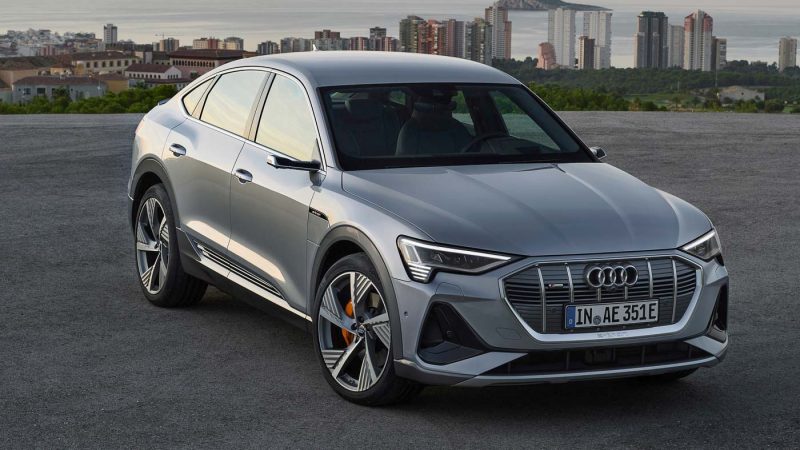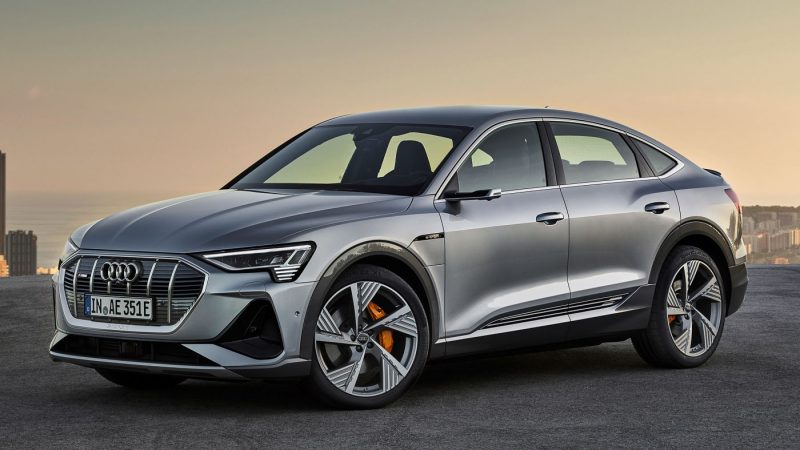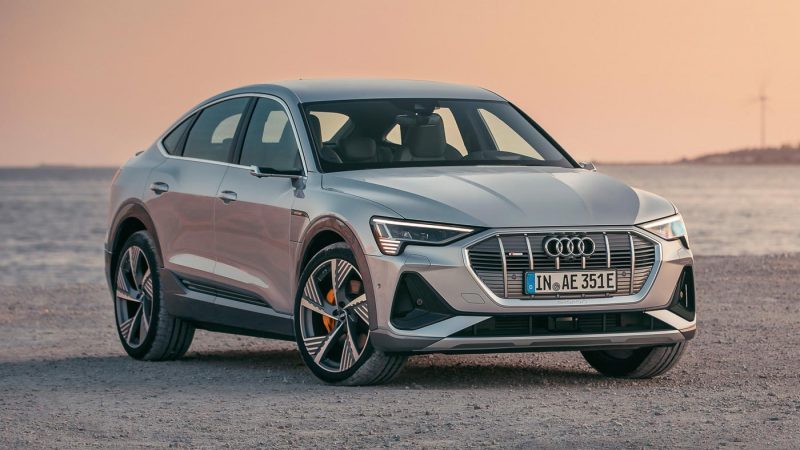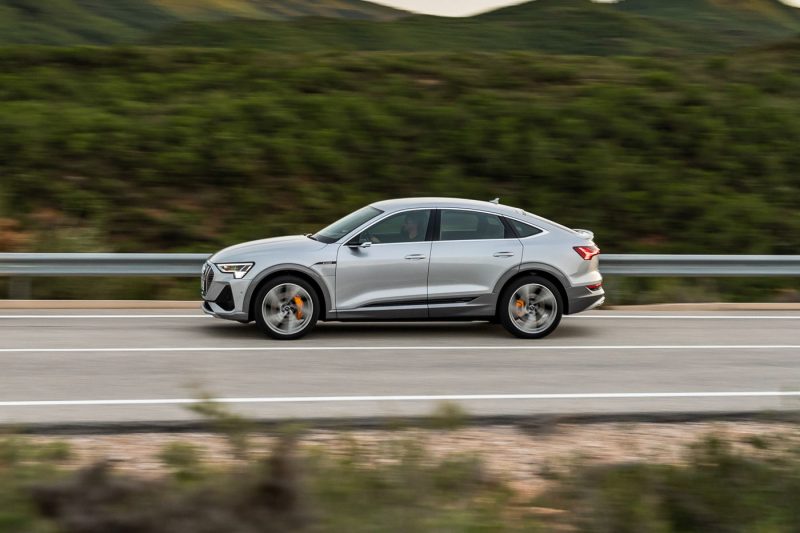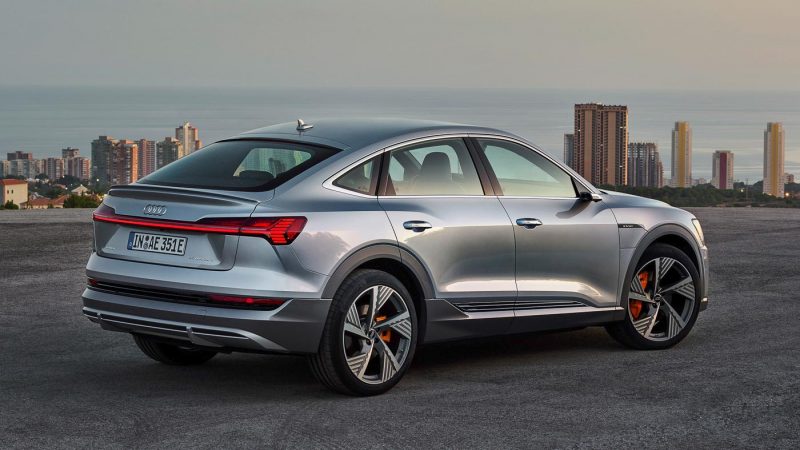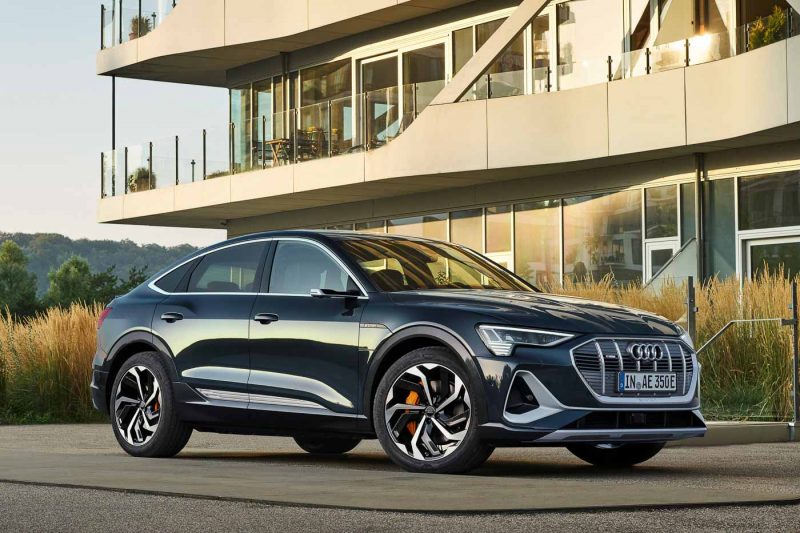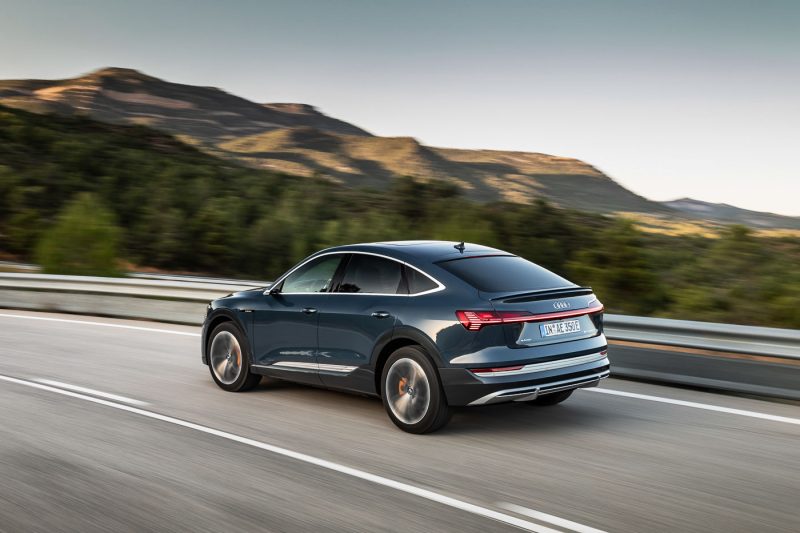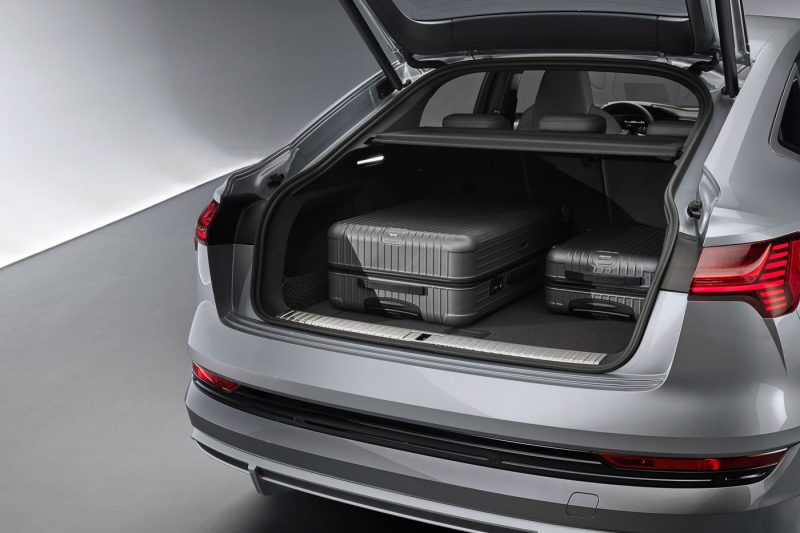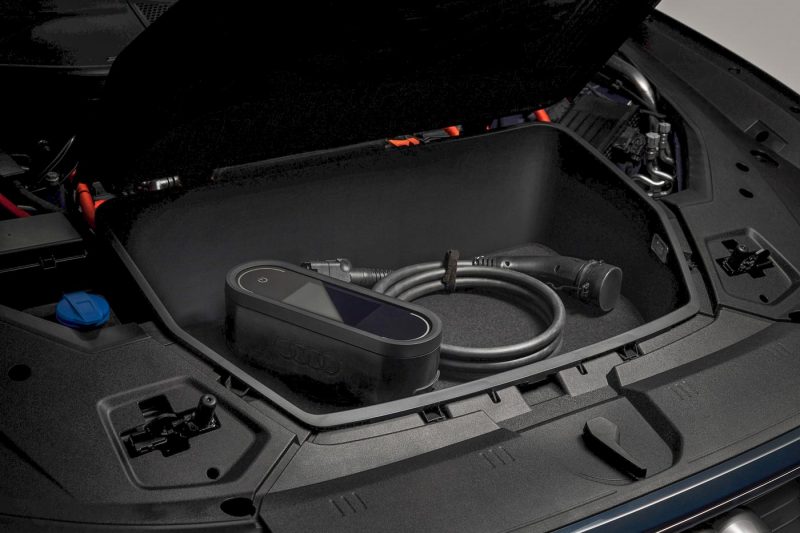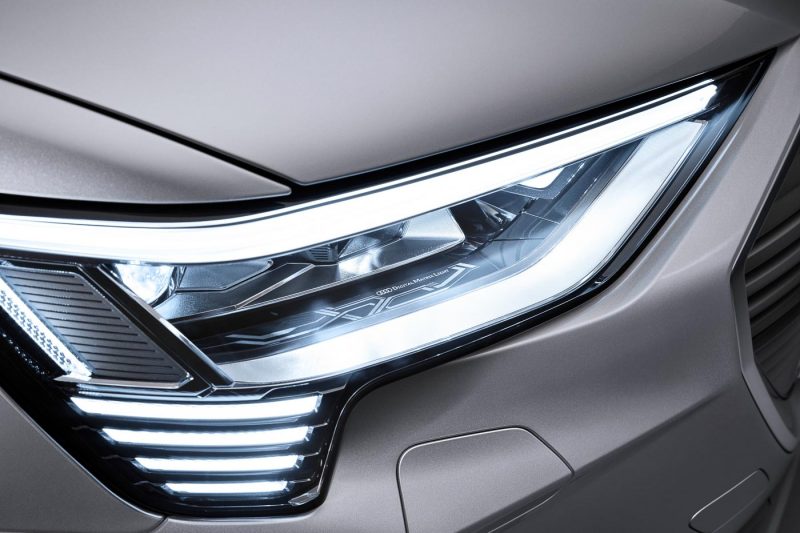If you think that the Audi e-Tron – the brand’s first battery-powered electric car looks a little too regular Joe, you might want to pay attention to this. Audi has unveiled the e-Tron Sportback at the Los Angeles auto show, for the more stylish lot.
As the name suggests, the e-Tron Sportback features a steeply raked D-pillar for the coupe-esque look. However, the changes made on the Sportback goes more than just for aesthetic purposes only.

The sleek roofline actually makes the car more aerodynamic, with a drag coefficient of just 0.25, compared to the 0.27 Cd of the standard e-Tron. There’s the upgraded brake system too, to reduce residual brake torque on brief applications, along with the upgraded water cooling pumps, decoupling of the axles, and increased usable battery capacity.
All this means that the Sportback (in the 55 quattro guise) can do 446 km on a single battery charge based on the WLTP cycle, 40 km more than the standard e-Tron.

The Audi e-Tron Sportback will be available in two power output levels; the more powerful 55 quattro variant with a 95 kWh lithium-ion battery has an output of 355 hp and 561 Nm of torque, which can be temporarily boosted up to 402 hp and 664 Nm in sport mode for as long as eight seconds. 0 to 100 km/h is done in just 5.7 seconds in this mode.
The 50 quattro model on the other hand features a smaller 71 kWh battery, and generates 308 hp and 540 Nm. The century sprint is done in 6.8 seconds, onward to a top speed of 190 km/h. Due to the smaller battery, the 50 quattro has a lower range of 347 km on the WLTP cycle.
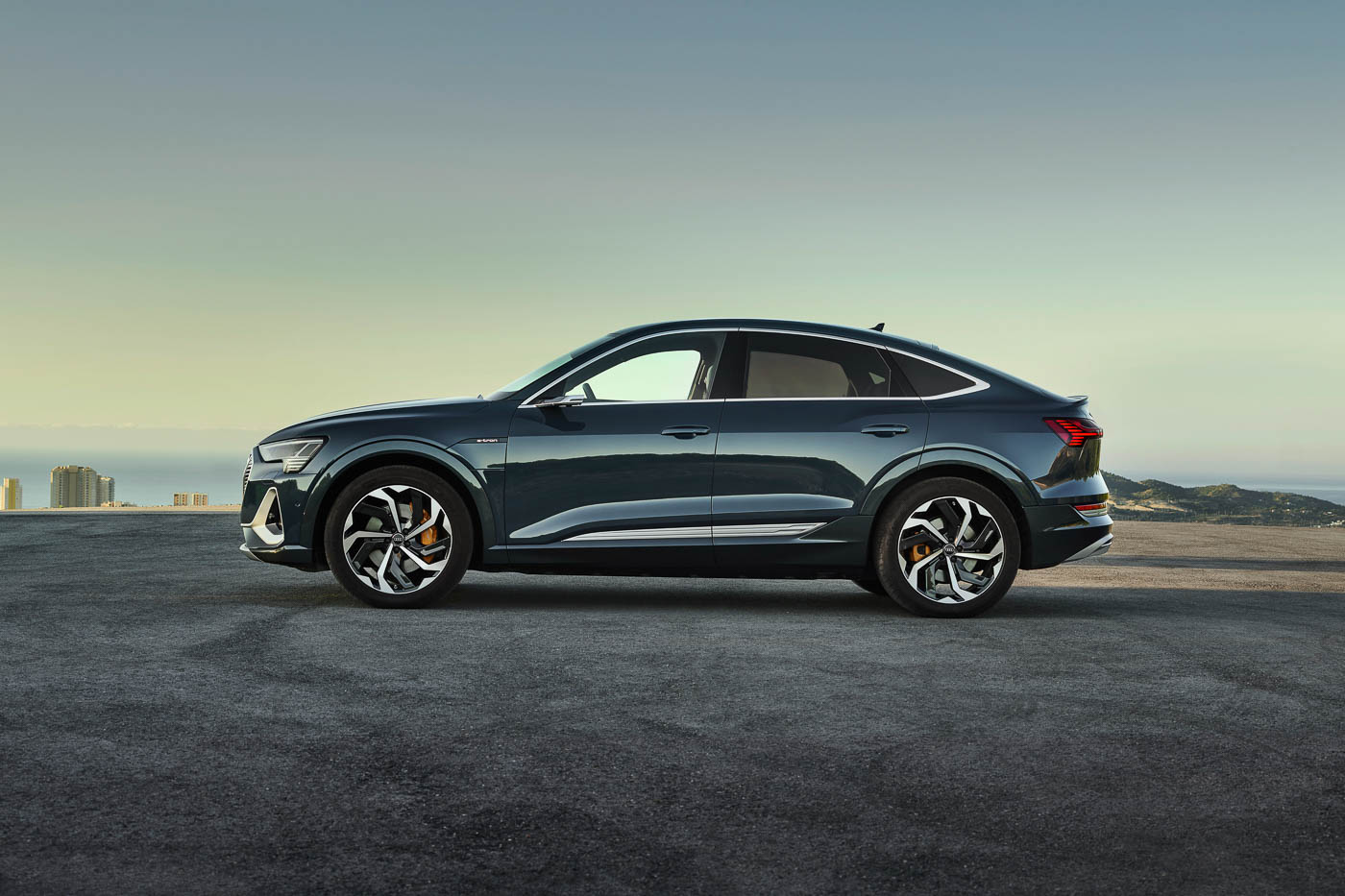
The quattro nameplate also suggests that both of these models will be available in all-wheel drive, however the front axle is almost always decoupled during normal driving for better efficiency and increased range.
The Audi e-Tron also features the world’s first digital matrix LED headlights on a mass-production car. Featuring technology found in projectors, the headlight uses more than 1 million micromirrors to direct the lights on the road or pedestrians it spots, without dazzling oncoming traffic.
The digital matrix LED headlights can also display animations on the ground or a wall, but Audi says this feature will only be available from mid-2020.

Moving inside, the cabin of the e-Tron Sportback is basically identical to that of the e-Tron. The dashboard design is instantly recognisable, featuring the dual touchscreen centre-console setup as with many other Audis.
The is also an optional virtual exterior mirrors, where the picture from the digital cameras are displayed on an OLED screen positioned between the instrument panel and the door. The smaller virtual exterior mirrors also help with the efficiency of the car.

The coupe-like roofline does have its drawbacks though, with luggage space at the rear dropped to 615 litres – 45 litres less than the standard e-Tron. Rear headroom is also lowered by 20 mm. There is still the “froot” (or frunk) at the front that offers 60 litres of storage space.
Charging wise, the e-Tron Sportback comes with a 11 kW charger for home use, which can be increased to 22 kW with an optional on-board device.

As with the e-Tron, the 55 quattro can be recharged with a 150 kW DC charging station, which can fill up 80% of its battery capacity in just under 30 minutes. The 50 quattro does the same with 120 kW DC.
The Audi e-Tron Sportback will be available in two trim levels, with the sportier S line getting 20-inch wheels (upgradeable to 22-inch) and sports air suspension. The front bumper is also reworked alongside the air curtains, which improves aerodynamics of the Sportback.

The wheel arch trims, sills, bumpers, and exterior mirrors are painted in body colour (matt anthracite on the non-S variant). For a more aggressive look, buyers can opt for a black styling package that blacks-out the singleframe grille area, side windows, bumpers, and the wing mirrors.
IMAGE GALLERY





